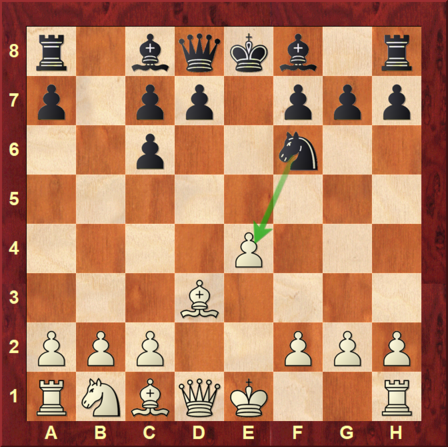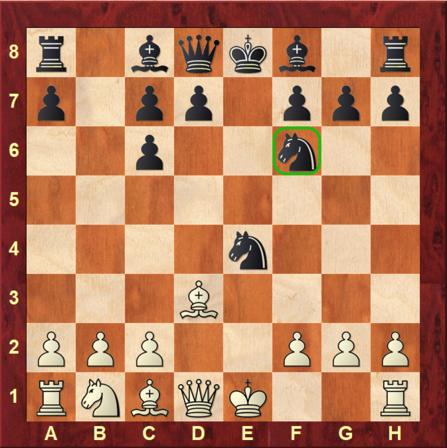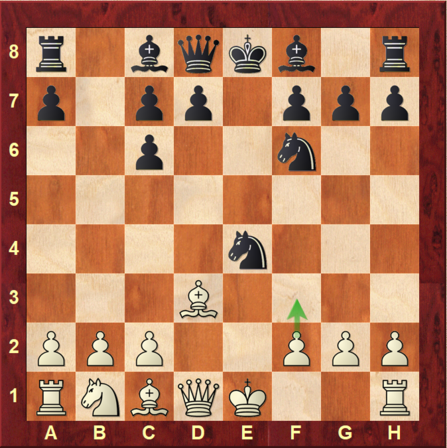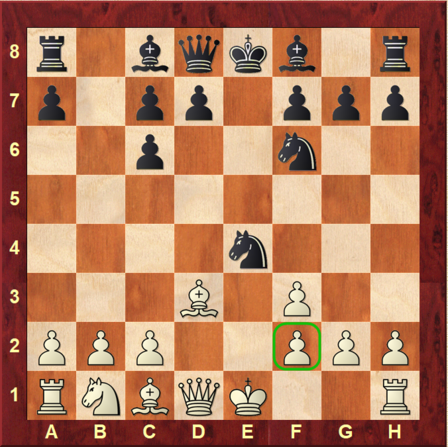Doppelgänger Chess™
|
|
A doppelgänger is a look-alike or double of a living person that is not related to that person. Sometimes it is portrayed as a ghostly or paranormal phenomenon and usually seen as a harbinger of bad luck. In Doppelgänger Chess™, the doppelgänger is certainly bad luck but only for your opponent!
The rules of Doppelgänger Chess™ are exactly the same as normal Chess with one important exception. A player can move a piece to a new square and at the same time leave the piece on the original square! Note you can only do this with pieces whose same type have previously been captured.
Here are a couple of examples to explain how it works:
It is Black's turn to move. Black has lost one of his knights so he is able to create a doppelgänger knight using his remaining knight on f6.
He does this by moving the f6-knight to e4, capturing the e4-pawn.

Black doesn't have to create the doppelgänger - it is his choice.

For White's turn, she decides to move the f2-pawn to f3. But she doesn't want to weaken the f2-square. Hmmm, what to do?

White comes up with a nice solution. As she has lost a pawn previously, she moves the f2-pawn to f3 and creates a doppelgänger pawn on f2!

So what pieces can you create doppelgänger's with? The answer is anything you have already lost, as long as you have at least one of those pieces still on the board. So rooks, knights, bishops and pawns can become doppelgängers. Queen's cannot be doppelgänger unless you promote a pawn to a queen. Then lose one of your queen's. And then you can create a doppelgänger queen.
|
© Copyright Chess Power Ltd
- Site map
|